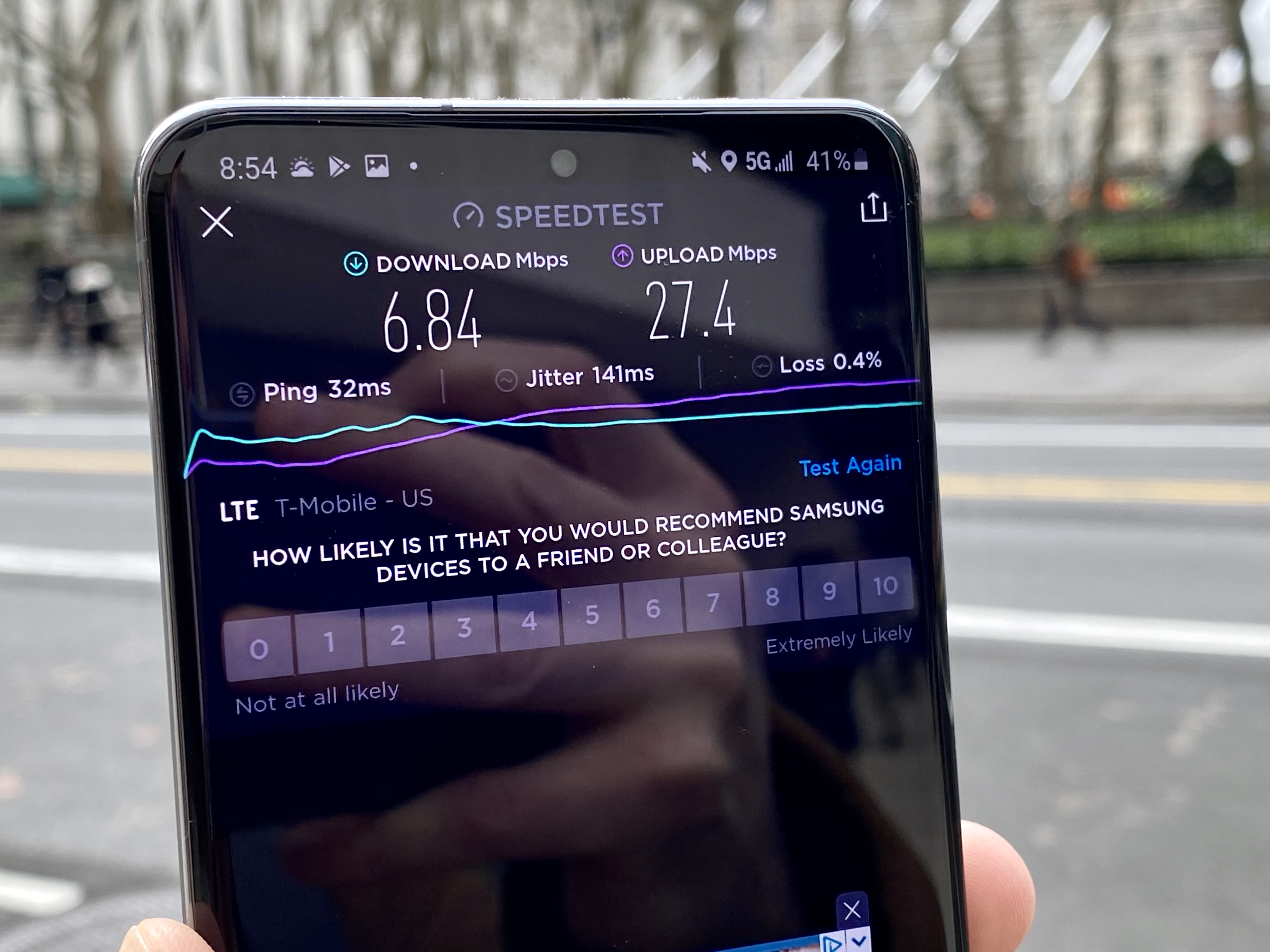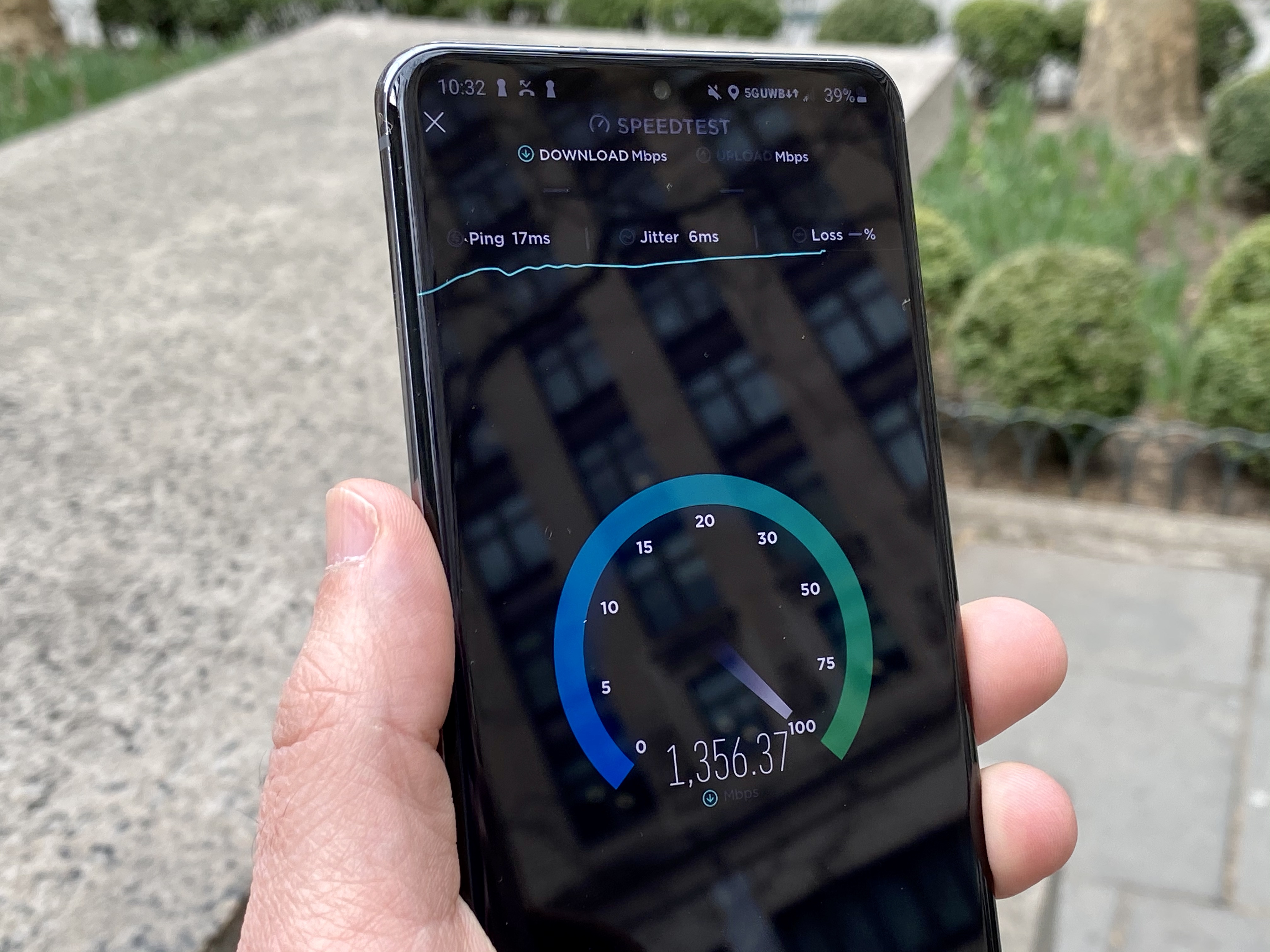The Samsung Galaxy S20's '5G' looks like bullsh*t on T-Mobile

So I was out shooting our video review for the $1,400 Samsung Galaxy S20 Ultra this week and I wanted to show a couple of examples of 5G speeds. No such luck.
Over T-Mobile’s 5G network, I fired up the Speedtest.net app to see what download speeds the S20 Ultra could get in midtown Manhattan. Near Bryant Park, the phone pulled down 32.5 Mbps, but in Times Square the phone got only 7.46 Mbps. This is 5G?!
To be fair, the S20 Ultra delivered much faster downloads in Brooklyn, hitting as high as 98.9 Mbps down on one test, but strangely the Speediest app said that the phone was on LTE in its results menu.
Overall, the the S20 averaged 25 Mbps downloads over a couple of weeks, which is pretty weaksauce.
Okay, this is just one app, so I decided to download some web pages side by side with the iPhone 11 Pro Max, an LTE device on Verizon’s network. In some cases the T-Mobile's network was faster on the Galaxy S20 Ultra, but in other cases the 4G iPhone loaded sites and articles more quickly.
For another world-real test I tried downloading a 51-minute Altered Carbon season 2 episode on Netflix over T-Mobile’s “5G.” After seeing the progress meter barely budge after a minute I just gave up.
So what’s going on here? As explained by PCMag’s Sascha Segan, T-Mobile 5G and AT&T 5G are currently using low-band LTE in most locations, which is delivering 4G-like speeds. Things should improve over time as the carriers build out their networks, but right now that 5G icon looks like a big lie.
Get instant access to breaking news, the hottest reviews, great deals and helpful tips.
Verizon 5G and Sprint 5G look better

Meanwhile, Verizon’s 5G network boasts speeds in excess of 1 Gbps over the carrier's mmWave-based network. You need to be close to one of Verizon's nodes, and Verizon's 5G has trouble reaching indoors. Still, I give Verizon credit for only showing the 5G icon when you can get 5G performance.
I ran a couple of speed tests in Bryant Park with Verizon on the Galaxy S20 Ultra, and the phone hit a download speed of 1.4 Gbps. That's way, way faster than T-Mobile's network.
I also downloaded a 46-minute Altered Carbon 2 episode over Verizon's 5 network in just 5 seconds. Yes, 5 seconds.
Sprint’s 5G network is in the middle of the pack, with speeds typically in the 200 to 300 Mbps range on its 2.5-GHz mid-band spectrum. That's not bad when you consider that you don't need line of sight to achieve these speeds.
We’ll be performing more speed tests with the Galaxy S20 Ultra, Galaxy S20 and Galaxy S20 Plus across all of these networks. But I wanted to warn you now that — at least based on my experience — T-Mobile’s 5G doesn’t feel like 5G at all right now.
Mark Spoonauer is the global editor in chief of Tom's Guide and has covered technology for over 20 years. In addition to overseeing the direction of Tom's Guide, Mark specializes in covering all things mobile, having reviewed dozens of smartphones and other gadgets. He has spoken at key industry events and appears regularly on TV to discuss the latest trends, including Cheddar, Fox Business and other outlets. Mark was previously editor in chief of Laptop Mag, and his work has appeared in Wired, Popular Science and Inc. Follow him on Twitter at @mspoonauer.

